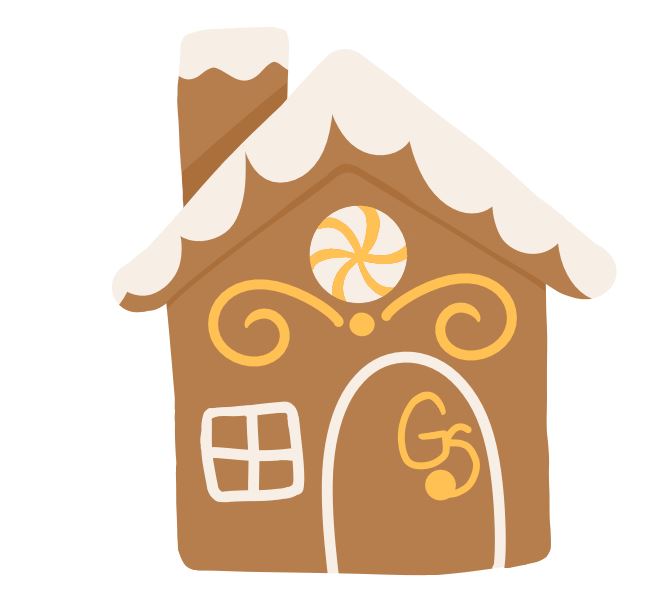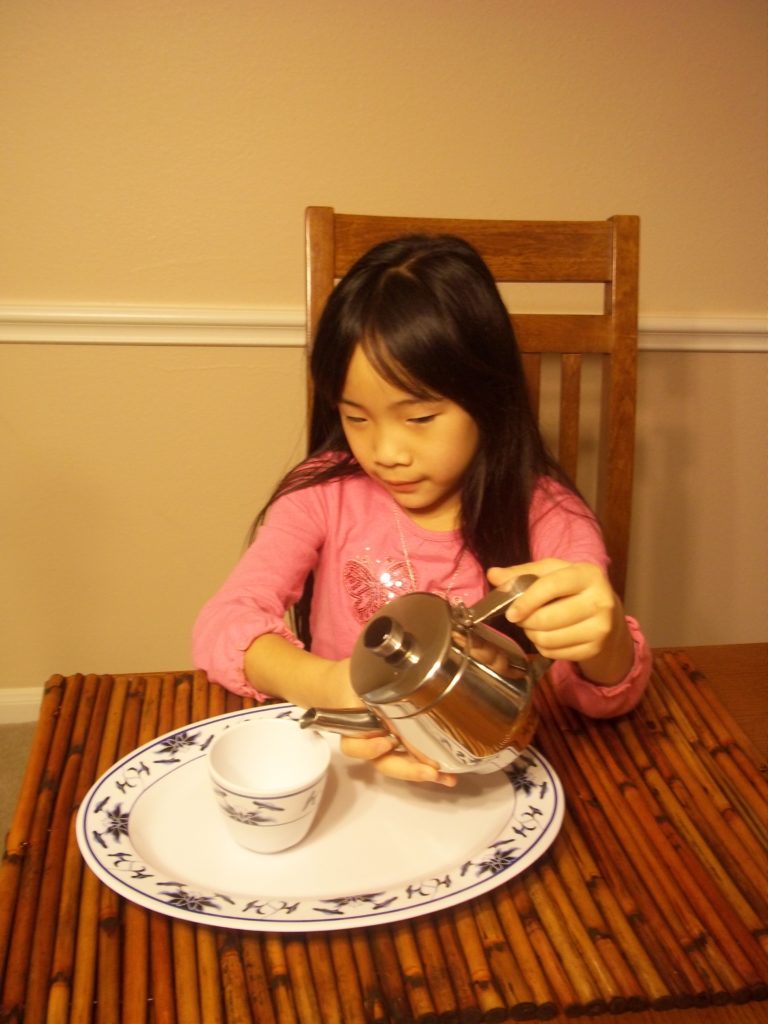
Pouring liquids requires even more skill than dry ingredients. It is a wonderful asset to Practical Life activities. It can also be highly varied and take on so many different materials and forms for both interest and skill building. Water and colored water can be shelf materials – just make sure to replace those regularly and keep towels nearby so that children can learn to clean up their spills.
Colored water can be mixed easily using food colors. This is a good project to have the child complete with you. It is a fun experiential activity to see how adding a drop of food coloring changes the color of the water. Be aware that depending on the food coloring used and the amount of color added, spills of colored water may stain some surfaces including carpets.
The child will spill water during the practice of pouring liquids. It is normal and should be expected. This is where the value of authentic materials really comes into play. Pretending to pour doesn’t create the need to understand how the skills must be adjusted. If the child misses the container; overflows the cup; pours to fast; or other such mistakes; then, he will understand the need to adjust his pouring skills.
Each activity in the pouring section includes a tray to catch most spills. It should catch most of the water but be prepared for spills which go beyond the container. You may want to set up a special area just for pouring activities. When using colored water, take extra care to set the activities over a hard floor or place a water proof covering (such as a plastic table cloth or shower curtain) over carpets as these may create stains.
Pouring Liquids
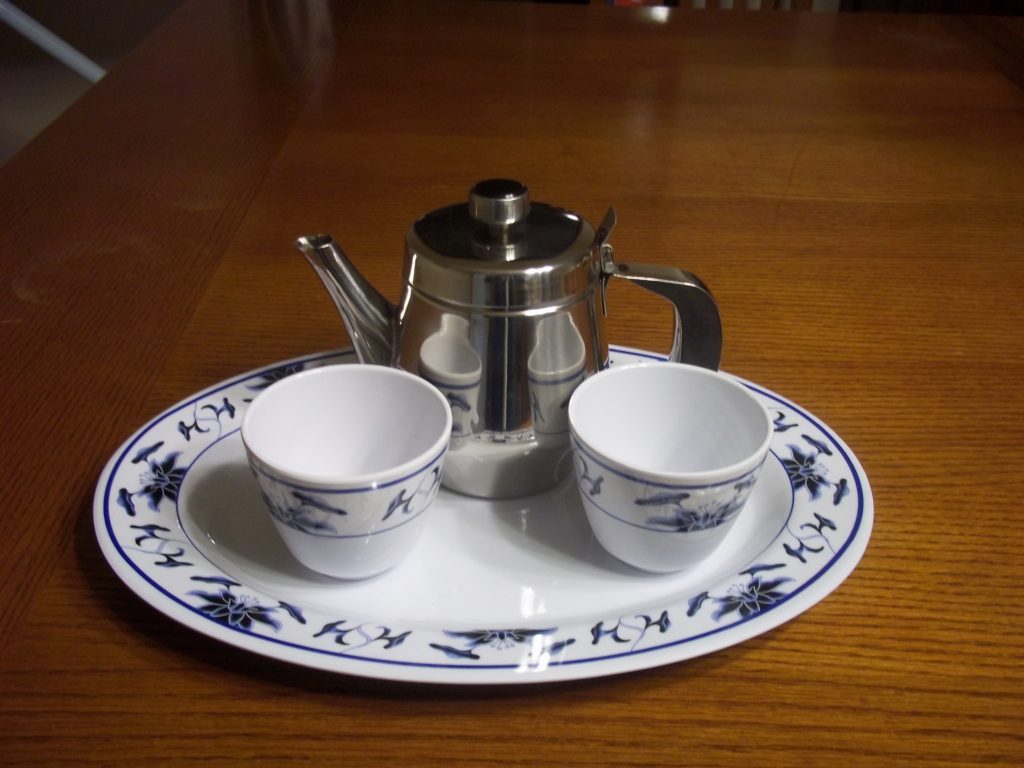
Materials Needed
- Teapot
- Teacups
- Tray
Presentation and Activity:
Hold the teapot handle with the dominant hand and place the other hand under the spout to provide support and control. Carefully position the spout over the tea cup and pour the water into the cup until it is full then set the tea cup back down. Open the lid on the teapot. Then pick up the cup and slowly pour the water back into the teapot. The activity can then be repeated.
Extension 1
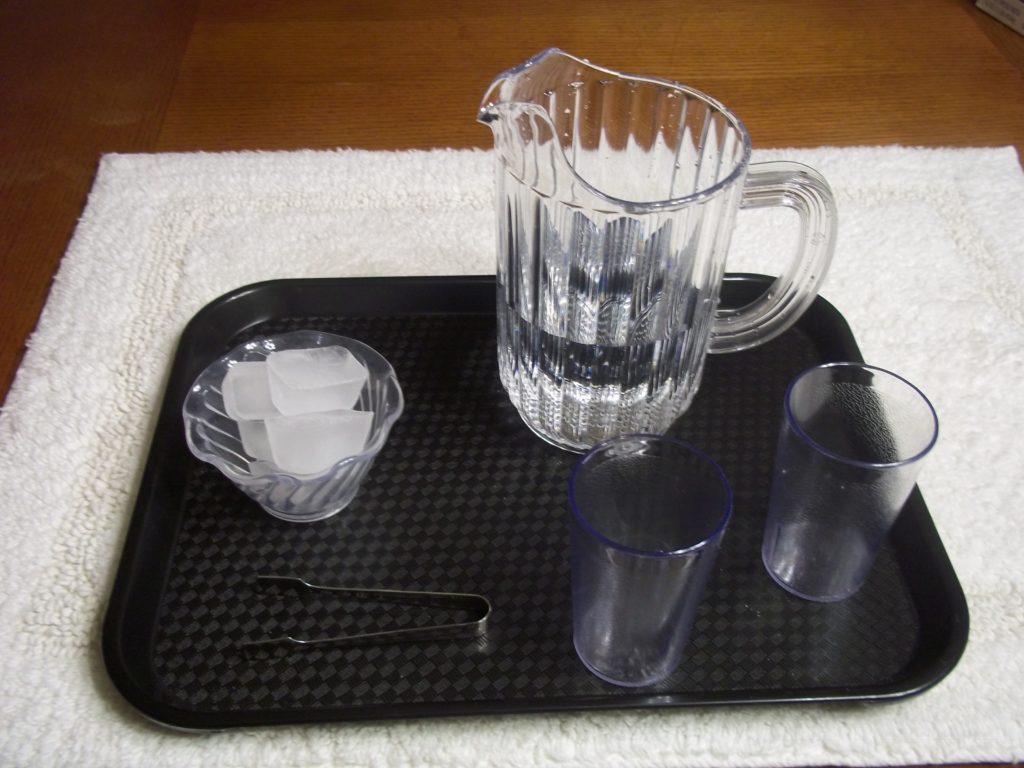
This extension uses a small plastic pitcher and tiny 5 oz juice cups. The pitcher is held in the same manner as the teapot when pouring.
Extension 2
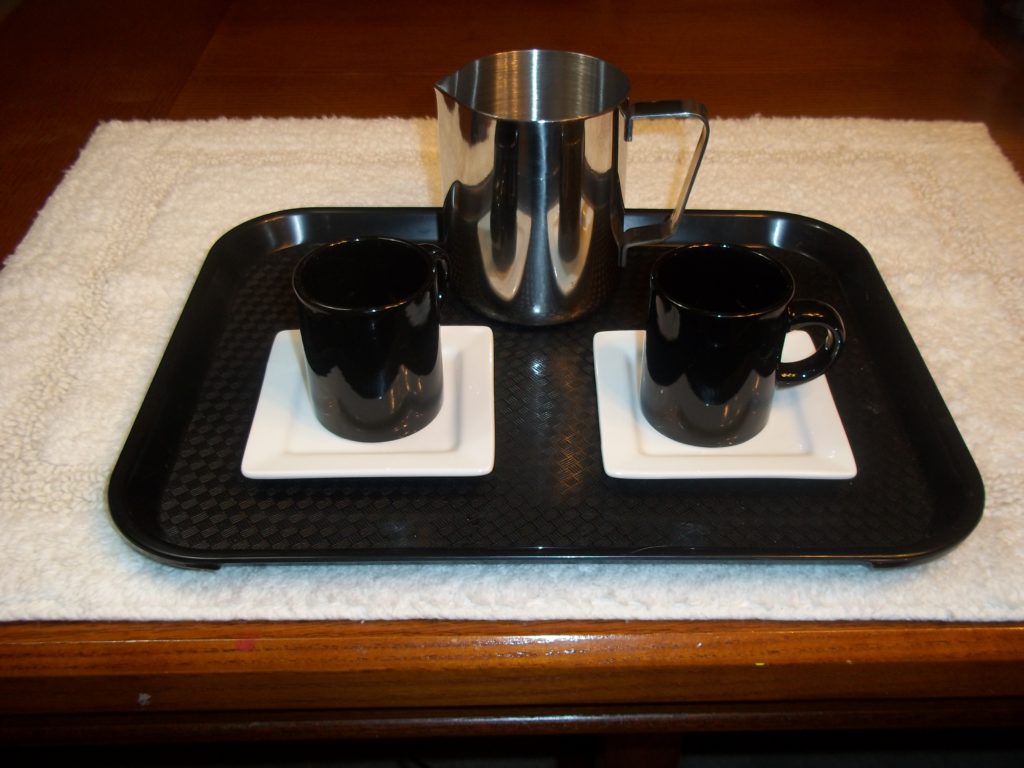
This extension uses a small stainless steel creamer and demitasse espresso cups for pouring water. This technique is the same as in the other pouring exercises. This extension allows the child another opportunity to work with materials that are different in size and shape.

You can find many more activities in the book which is available at Amazon.com. Direct links to all of the books are on the page labeled “Dr. Andrea’s Books.”
